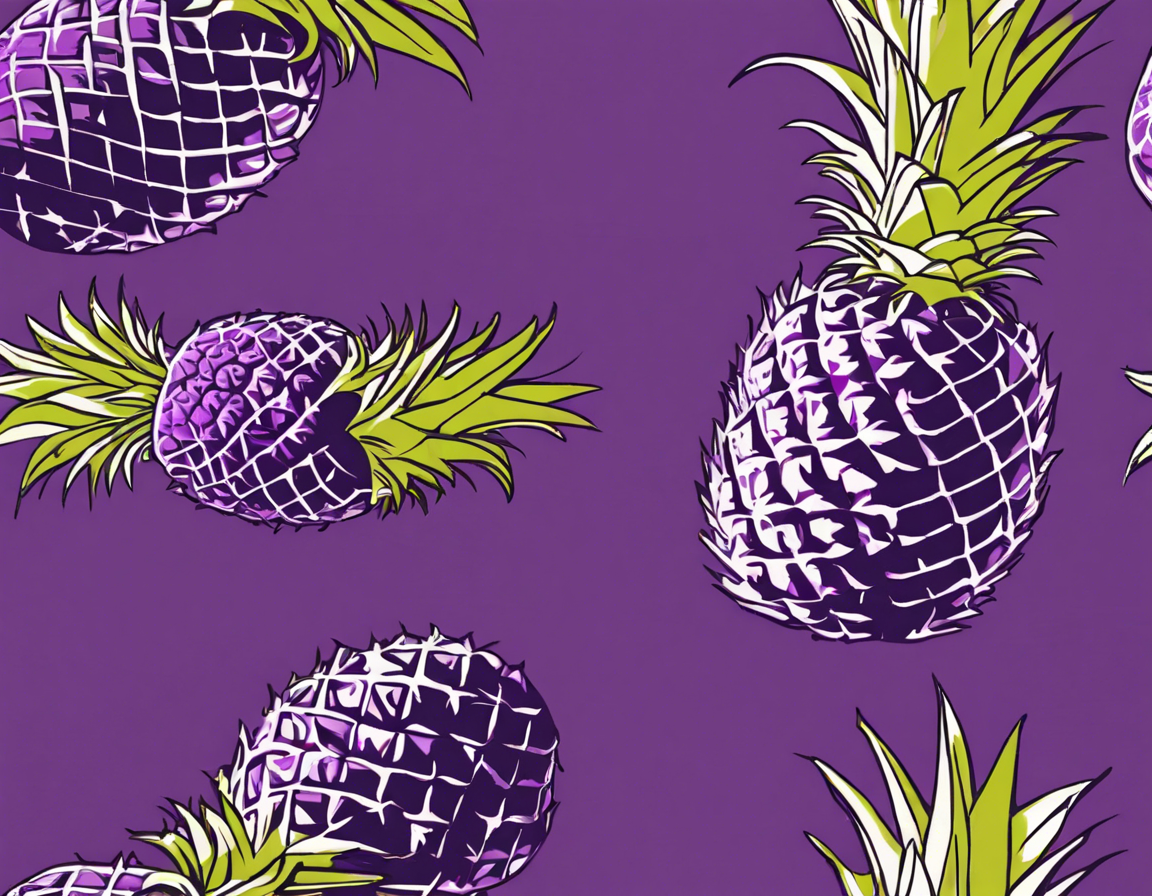Introduction
In the world of fruits, there are many traditional options that come to mind. Apples, bananas, oranges, and strawberries are all well-known and widely consumed fruits. However, what if there was a fruit that combined the characteristics of two completely different fruits? Enter the ‘Purple Pineapple’ – a fascinating and unique fruit hybrid that is causing a stir in the culinary world. In this article, we will delve into the origins, characteristics, nutritional benefits, and cultivation of this intriguing fruit.
Origins of the Purple Pineapple
The Purple Pineapple is a hybrid fruit that is created by cross-pollinating a traditional pineapple with a purple fruit, such as a berry or a plum. The exact origins of the Purple Pineapple are not entirely clear, but it is believed to have been developed through selective breeding and hybridization techniques. This process involves carefully selecting and breeding plants with desirable traits to create a new and unique fruit variety.
Characteristics of the Purple Pineapple
The most striking feature of the Purple Pineapple is, as the name suggests, its purple color. Unlike the traditional yellow pineapple, the Purple Pineapple exhibits a vibrant shade of purple that sets it apart visually. The flesh of the fruit is also purple, with a sweet and tangy flavor that is a delightful combination of the parent fruits.
In terms of size, the Purple Pineapple is comparable to a regular pineapple, with a spiky outer skin that needs to be peeled before consumption. Inside, the flesh is juicy and succulent, making it a refreshing and flavorful treat. The texture is similar to that of a traditional pineapple, with a balance of firmness and juiciness that appeals to a wide range of palates.
Nutritional Benefits of the Purple Pineapple
The Purple Pineapple boasts a range of nutritional benefits that make it a valuable addition to a healthy diet. Like its parent fruits, the Purple Pineapple is rich in essential vitamins and minerals that support overall health and well-being. Some of the key nutrients found in the Purple Pineapple include:
- Vitamin C: Known for its immune-boosting properties, vitamin C is abundant in the Purple Pineapple. This vitamin helps protect cells from damage, promote healthy skin, and boost the body’s ability to absorb iron.
- Fiber: Dietary fiber is essential for digestive health, and the Purple Pineapple is a good source of this important nutrient. Fiber helps maintain regularity, prevent constipation, and support a healthy gut microbiome.
- Antioxidants: Purple fruits are often rich in antioxidants, which help combat oxidative stress and reduce the risk of chronic diseases. The Purple Pineapple inherits these antioxidant properties, making it a powerful weapon against inflammation and cell damage.
- Manganese: Manganese is a trace mineral that plays a role in metabolism, bone health, and wound healing. The Purple Pineapple provides a significant amount of manganese, contributing to overall health and vitality.
Cultivation of the Purple Pineapple
Growing Purple Pineapples can be a rewarding experience for home gardeners and commercial farmers alike. While the hybrid nature of this fruit presents some unique challenges, following a few key guidelines can help ensure a successful harvest.
Soil and Climate: Like traditional pineapples, Purple Pineapples thrive in tropical or subtropical climates with plenty of sunlight. Well-draining soil that is rich in organic matter is ideal for cultivation. The pH level of the soil should be slightly acidic for optimal growth.
Propagation: Propagating Purple Pineapples can be done through the use of suckers or crowns. Suckers are offshoots that grow at the base of the plant and can be carefully removed and replanted. Crowns are the leafy tops of the fruit that can be rooted in water before transplanting into soil.
Care and Maintenance: Purple Pineapples require regular watering, especially during dry periods. Fertilizing with a balanced, slow-release fertilizer can help promote healthy growth. Mulching around the base of the plant can help retain moisture and suppress weeds.
Harvesting: Purple Pineapples are typically ready for harvest when the outer skin takes on a deep purple hue and the fruit yields slightly to gentle pressure. Care should be taken when cutting the fruit from the plant to avoid damaging the stem or surrounding foliage.
FAQs (Frequently Asked Questions)
1. Can Purple Pineapples be grown indoors?
– While Purple Pineapples prefer a sunny outdoor environment, they can be grown indoors in containers with adequate sunlight and proper care.
2. Are Purple Pineapples genetically modified?
– No, Purple Pineapples are not genetically modified. They are created through traditional breeding methods to combine the traits of two different fruits.
3. How long does it take for a Purple Pineapple plant to fruit?
– Purple Pineapple plants typically take 18-24 months to produce fruit, depending on growing conditions and care.
4. Are Purple Pineapples safe for consumption?
– Yes, Purple Pineapples are safe to eat and offer a range of nutritional benefits similar to traditional pineapples.
5. Can Purple Pineapples be used in cooking and baking?
– Purple Pineapples can be used in a variety of culinary applications, including smoothies, desserts, salads, and savory dishes. Their unique color and flavor add a creative twist to recipes.
In conclusion, the Purple Pineapple is a remarkable fruit hybrid that offers a blend of aesthetics, flavor, and nutrition. Whether grown for personal enjoyment or commercial production, this unique fruit is sure to captivate the senses and pique the curiosity of fruit enthusiasts worldwide. From its origins to cultivation and consumption, the Purple Pineapple is a testament to the endless possibilities of hybridization in the world of fruits.
